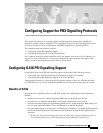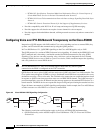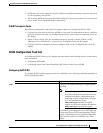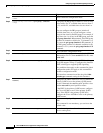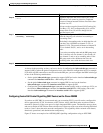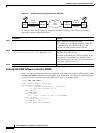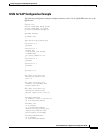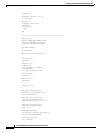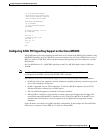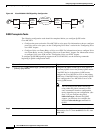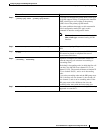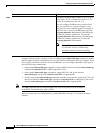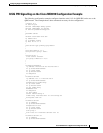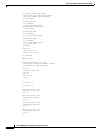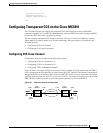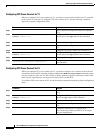
MC-413
Cisco IOS Multiservice Applications Configuration Guide
Configuring Support for PBX Signalling Protocols
This chapter describes how to configure support for PBX signalling formats such as Q.SIG and
transparent common channel signalling (CCS). Configuring support for these signalling protocols on
your router enables the router to interoperate with PBXs running these signalling protocols.
This chapter includes the following sections:
• Configuring Q.SIG PRI Signalling Support
• Configuring Transparent CCS on the Cisco MC3810
For a complete description of the commands used in this chapter, refer to the Cisco IOS Multiservice
Applications Command Reference. To locate documentation of other commands that appear in this
chapter, use the command reference master index or search online.
Configuring Q.SIG PRI Signalling Support
Configuration Tasks for Q.SIG PRI signalling support are described in the following sections:
• Configuring Voice over IP Q.SIG Network Transparency on the Cisco AS5300
• Configuring Q.SIG PRI Signalling Support on the Cisco MC3810
Although the procedures for configuring Q.SIG signalling support on the Cisco AS5300 and on the
Cisco MC3810 are very similar, implementation differences are described in the respective sections.
Benefits of Q.SIG
On both the Cisco AS5300 and the Cisco MC3810, Q.SIG voice signalling provides the following
benefits:
• Enables Cisco devices to connect with digital PBXs that use the Q.SIG form of CCS.
• Provides access to multiple remote PBXs with a single connection to a Cisco device.
• Provides transparent support for supplementary PBX services, so that proprietary PBX features are
not lost when connecting PBXs to Cisco AS5300 and Cisco MC3810 networks.
• Provides Q.SIG support based on widely used ISDN Q.931 standards. Cisco Q.SIG implementation
follows the following European Telecommunications Standards Institute (ETSI) implementation
standards:
–
ECMA 143: Private Telecommunication Network (PTN) Inter-exchange Signalling Protocol
Circuit Mode Basic Services. (This specification covers Q.SIG basic call services.)



